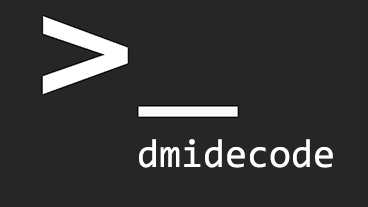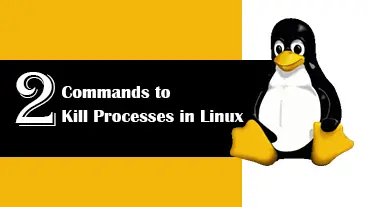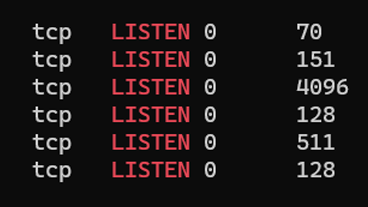- Tutorials
- 6 Most Common Linux Logging Issues
- How to Run an Ubuntu Update
- Setting up a VPN on Linux without a Native App
- A Distro-Hopper’s Guide to Hacking on Linux for Beginners
- Ubuntu: How to Install .deb Files
- The Linux sleep Command – Tutorial and Examples
- du Command in Linux – Tutorial and Examples
- How to Count the Number of Files in a Directory on Linux
- How to Create a File in Linux
- How to on Linux: Unzip a .gz File
- Recent Comments
- Recent Articles
- Linux Tutorials
- Find Case Insensitive Search with Linux Find Command
- How to Check Apache Web Server Version in Linux
- Creating Bash Alias with Linux alias command
- How to Get PID of a Process in Linux Terminal
- Environment Variables That Control Linux Command History
- Yum priorities: Installing Yum Priorities and Prioritizing repositories on CentOS 7
- How to install the latest version of EPEL Repo on CentOS 7
- How to Check OS version in Linux with lsb_release command
- Real-Time Linux network traffic monitoring with Iftop
- Install phpMyAdmin on CentOS 7 for PHP 7
- How to Install LAMP Stack on CentOS 7
- How to Concatenate Files in Linux with cat command
- How to Catch Standard Error to a Variable in Bash
- Learn Linux Bash Output Redirection and Command Pipes
- How to Show Currently logged in users in Linux
- Download WordPress Latest Version with wget command
- Change Runlevel in Linux with systemctl Command
- dnf Command — Install and Manage Packages in CentOS / Fedora
- How to Unzip Zip files in Linux using unzip Command
- How to Update Bash In Linux Operating System
- How to Run Cron Job When System Reboot in Linux
- How to Deny specific user from Running Cron jobs in Linux
- How to Get My Public IP Address using Linux curl Command
- How to Check Bash Version in Linux Operating System
- How to Create a Directory in Linux Operating System
Tutorials
Linux tutorials. Help and instructions on how to do something in Linux.
6 Most Common Linux Logging Issues
Want to learn more about Linux logging? Check out this list of the six most common Linux logging issues.
How to Run an Ubuntu Update
In this tutorial, we will show you how to run an Ubuntu update – how to update your software/packages on Ubuntu and how to update the version of Ubuntu you’re running.
Setting up a VPN on Linux without a Native App
In this tutorial, I’ll show you how to set up a VPN on Linux if your VPN provider doesn’t have a native app built for Linux.
A Distro-Hopper’s Guide to Hacking on Linux for Beginners
It has been some time since the last time I posted an article. Due to life events, I was unable to write and as I come back to make another article I was greeted with a few comments. Thank you for that to those that read it. I hope it […]
Ubuntu: How to Install .deb Files
In this beginner-friendly tutorial, we’re going to show you how to install a .deb file on Ubuntu. We’ll show you different methods of installing a .deb file, so you can choose whichever one you prefer and find easier.
The Linux sleep Command – Tutorial and Examples
The sleep command is used to delay the execution of scripts or commands in Linux (and other Unix systems). In this beginner-friendly tutorial, we’ll show you how to use the sleep command on Linux and what it does, and we’ll include helpful examples.
du Command in Linux – Tutorial and Examples
In Linux, du stands for “disk usage” and it’s a command most often used to check the size (and other space/disk usage) of the files and directories.
How to Count the Number of Files in a Directory on Linux
In this beginner-friendly tutorial, we’re going to show you how to count files in a directory on Linux.
How to Create a File in Linux
In this tutorial, we’re going to show you how to create a file in Linux. The easiest way of doing this is through the CLI, but you can also do it via the GUI. We’ll include step-by-step instructions for both methods.
How to on Linux: Unzip a .gz File
In this tutorial, we’re going to show you how to unzip a .gz file on Linux. These instructions will work on any Linux distro, even on a Mac.
Recent Comments
- Avanish Kandel on Best Linux Phone: All Options Compared
- Francis on Basic Bash (CLI) Cheat Sheet
- stOOkiE on How to Run an Ubuntu Update
- Ct.H on Do You Need a VPN on Linux?
- TechSage on Best Linux Phone: All Options Compared
Recent Articles
Linux Tutorials
Using apachectl to Control Apache Server in Linux
Dmidecode — Command to Get Hardware Info in Linux
Command to Get Motherboard Model in Linux
How to Lock User Account in Linux with passwd command
Linux Remove Symbolic Link (Symlink)
Learn Linux Curl Command with Examples
Two Commands to Kill Processes in Linux Operating System
How to List only Directories in Linux ls Command?
Linux wget Command Examples, Tips and Tricks
How to Get CPU Information with lscpu Command in Linux
How To Check Open Ports in Linux
How to Display Calendar in Linux Terminal
Find Case Insensitive Search with Linux Find Command
Search for files and folders using the Linux find command with the case insensitive option.
How to Check Apache Web Server Version in Linux
There are one or two commands to check the apache web server version in Linux, depending on the Linux distribution you use.
Creating Bash Alias with Linux alias command
How to Get PID of a Process in Linux Terminal
To manage processes you need to know the PID of the process you want to manage. For example, let’s say you want to terminate a process that is unresponsive. We can terminate a process using the kill command, but we need to know the process ID.
Environment Variables That Control Linux Command History
There are a couple of important shell variables that control Linux Command History (HISTFILE, HISTFILESIZE and HISTSIZE).
Yum priorities: Installing Yum Priorities and Prioritizing repositories on CentOS 7
Yum Priorities are important If you have added additional third-party repositories, for example epel and remi. There can be a conflict when a version of a package is available from multiple repositories and you may end up installing the package from the least trusted source.
How to install the latest version of EPEL Repo on CentOS 7
We can install a wide variety of softwares and packages from the CentOs main repository. But some important packages (such as PHP 7, phpMyAdmin, HTOP and many more) are not available in the CentOS base repository.
How to Check OS version in Linux with lsb_release command
There are various reasons why you might want to find which Linux distribution you are using or the OS version of your Linux system. To know the version of Linux installed on your computer, there are many options. One of the options is the lsb_release command.
Real-Time Linux network traffic monitoring with Iftop
Iftop, one of the most popular command line tool for monitoring network traffic in Linux. Iftop command can quickly show you which source using most bandwidth by listing its IP address or hostname at the top of the output.
Install phpMyAdmin on CentOS 7 for PHP 7
In this tutorial we will learn how to install phpMyAdmin on CentOS 7 for PHP 7.
Epel repository provides a phpMyAdmin package for PHP 5, But it is not compatible with PHP 7. For PHP 7, we need to manually download and setup phpMyAdmin web interface.
How to Install LAMP Stack on CentOS 7
We are going to need a web server, a database, and PHP in order to serve dynamic PHP websites. LAMP is a term describing web server that includes all of these software packages.
CentOS 7 LAMP stack includes, following components.
How to Concatenate Files in Linux with cat command
In Linux cat command used to concatenate one or more files together. By default cat command reads the file and print output to the terminal.
How to Catch Standard Error to a Variable in Bash
To store stderr into a variable we need to use command substitution.
But, by default, command substitution only catches the standard output(stdout). To capture stderr we need to use 2>&1 redirector.
Learn Linux Bash Output Redirection and Command Pipes
In this tutorial we are going to learn How to use Output redirection and Pipes in Linux Bash environment.
In Linux bash there is Two types of Outputs, stdout (Standard Output) and stderr (Standard Error).
How to Show Currently logged in users in Linux
How to check how many users are logged in to the Linux system? There are few commands we can use to show currently logged in users in Linux Operating System.
Download WordPress Latest Version with wget command
Download the latest version of the WordPress installation package using the wget command and curl command.
Change Runlevel in Linux with systemctl Command
Most Linux distributions use systemd as their init system. In systemd, we use the systemctl command to change runlevels. Also, you should know that, in systemd we identify runlevels as “targets”. For Example multi-user mode called as multi-user.target.
dnf Command — Install and Manage Packages in CentOS / Fedora
In this tutorial we are going to learn how to use dnf command to install and manage packages in RPM-based Linux distributions.
The dnf command is the improved version of the yum package manager which is used in Redhat based Linux distributions. Currently Fedora use dnf command as its package manager and we expect the next major release of Redhat and CentOS will use dnf command as the their software installer.
How to Unzip Zip files in Linux using unzip Command
In this tutorial we are going to learn how to unzip zip files in Linux Operating System. The Zip file compression Format mostly used in Microsoft Window and often you will need to unzip zip files that ported from a windows computer.
To unzip zip file in Linux, we need to install unzip package. After we install unzip command, we can extract zip file from the command line or from the GUI, if you are using Linux Desktop.
How to Update Bash In Linux Operating System
In this Linux tutorial we are going to learn how to update bash in Linux Operating System. We will look how to update bash (GNU Bourne Again shell) in both Redhat Based Linux distributions and Debian Based Linux Distributions.
How to Run Cron Job When System Reboot in Linux
In this tutorial we are going to learn how to schedule cron jobs to run everytime after system reboot in Linux. The Linux crontab has a time option called @reboot which allows to run a cron job once after reboot every time.
How to Deny specific user from Running Cron jobs in Linux
In this Linux tutorial we are going to learn how deny specific user from running scheduled task using Linux cron job. Every Linux user can add their own cron jobs using crontab -e command. But what if we want to disable specific user from running cronjobs ?
How to Get My Public IP Address using Linux curl Command
In this tutorial we are going to learn how find Public IP Address of our computer using Linux curl command. Normally, if we want to find the public IP Address we use, we go to google and search “what is my ip address”. But if you use Linux, you can get your public IP Address from the command line using curl command. The curl command with ifconfig.me argument will show your public IP Address.
How to Check Bash Version in Linux Operating System
In this Linux tutorial we are going to learn how to how to check bash version in Linux. To get bash version in Linux, we can use either bash command or $BASH_VERSION environment variable. Easiest way to check bash version is to run bash —version in the command prompt.
How to Create a Directory in Linux Operating System
In This Linux Tutorial we are going to Learn How to make directories using mkdir Linux Command.
In Linux mkdir command use to create directory in Linux. If no path specified new directory will be created inside the current working directory.











